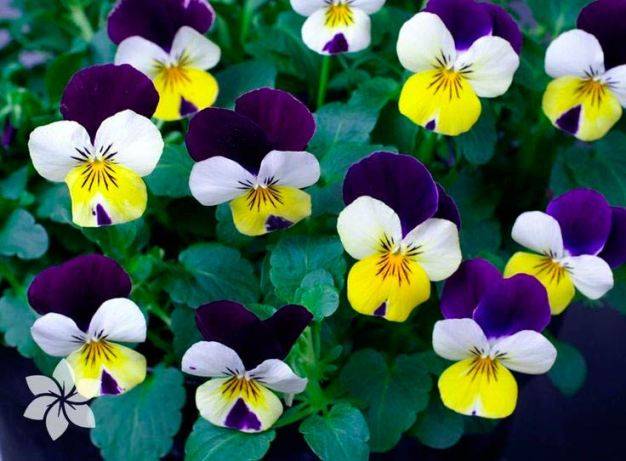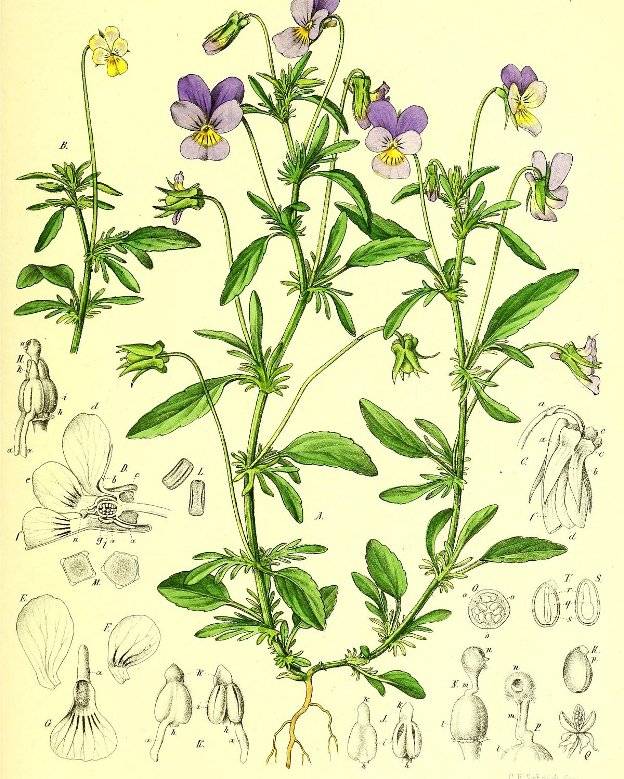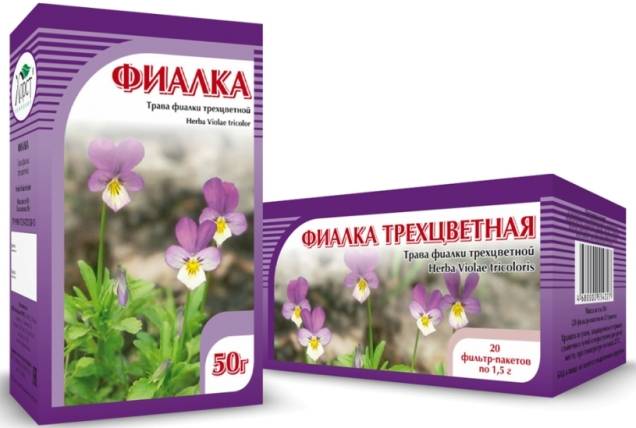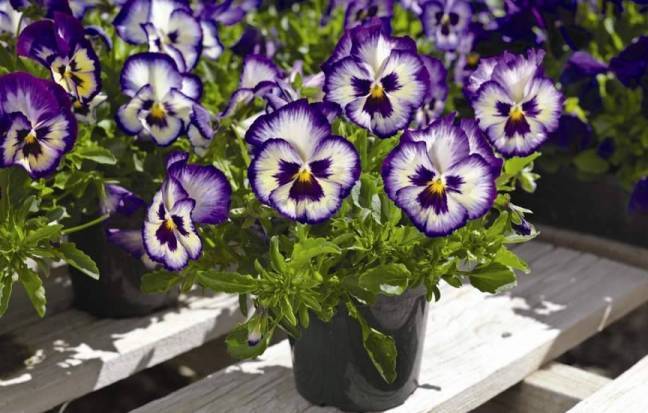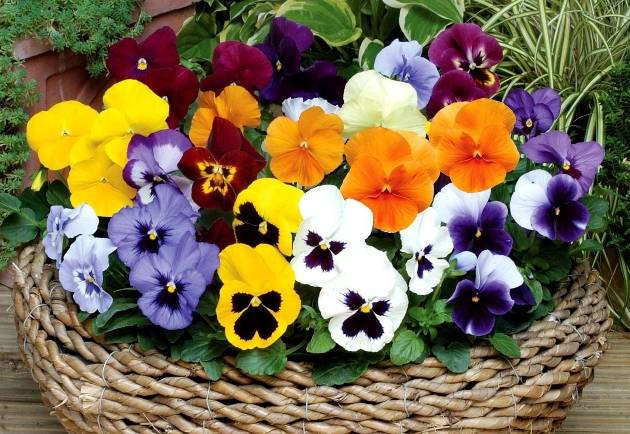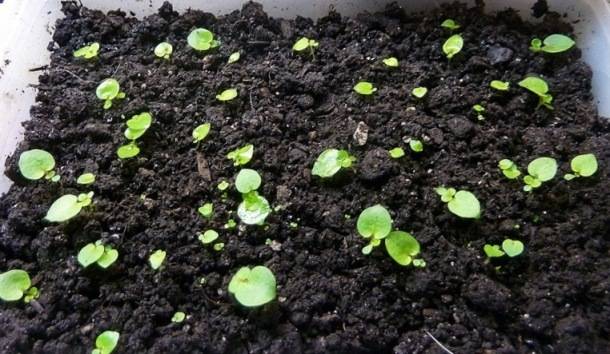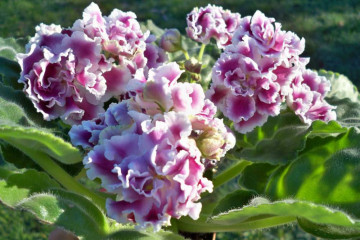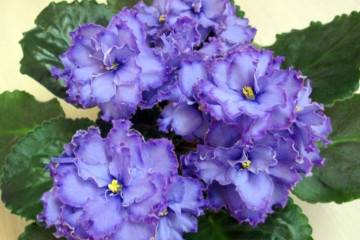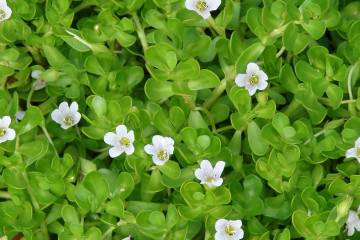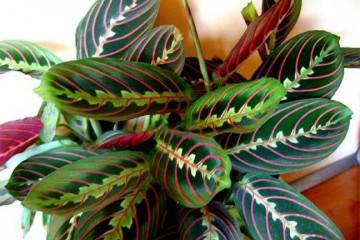Violet tricolor - how to grow and use properties correctly?
Content:
Violet tricolor, striking the eyes of others with lightness, trepidation and beauty, is found in meadows and forest edges, in ravines, park areas, on window sills and balconies. The unusual flower received other names: ivan-da-marya, pansies, moth, tricolor, saintpaulia. The cultivated plants are called viols.
Description of the tricolor violet
This one- or two-year culture is common in eastern Europe, Siberia, the Caucasus, Scandinavia and the Far East, the European territory of the former union.
Briefly about the history of appearance
The plant was discovered by the German baron W. Saint-Paul in the 19th century. in the Uzambariya district of Germany. Violet seeds fell into the hands of the botanist R. Wendland, who described the culture in 1893. The flower was named Saintpaulia from the name of the discoverer, a baron from Germany.
Plant characteristic
Botanical description of the violet tricolor:
- height 10-40 cm;
- thin tap root;
- stems are branched or simple, erect or creeping;
- upper leaves are oblong, lower leaves are ovate with long petioles;
- violet flowers grow on elongated pedicels, corollas consist of 5 petals;
- the two upper ones have a purple color, 2 side petals are blue, a white petal with stripes is located at the very bottom;
- fruits in the form of an egg-shaped capsule, when cracked, three valves are formed;
- seeds are small and smooth, yellow-brown in color.
The cultivated tricolor violets have a wide range of colors, ranging from white to red-brown with all kinds of frames, eyes, stripes.
Application in medicine
Pharmacognosy has confirmed the healing properties of the violet, thanks to which the flower is used in medicine.
Content of nutrients
In addition to magnesium, copper, manganese, iron, calcium, violet contains other useful substances:
- alkaloids, flavonoids and saponins;
- tannins;
- essential oils and polysaccharides;
- solanine and tannin;
- ascorbin and salicylic acid.
Saintpaulia has anti-inflammatory, expectorant, diuretic and choleretic effects. Performs antimicrobial and antibacterial functions. It is used as an antispasmodic and antiseptic. It is used to heal wounds, relieve itching, stress.
For what diseases is it used
For treatment, the roots, leaves and flowers of the viola are used.
Violet is treated:
- rheumatism, gout, arthritis;
- epilepsy;
- pain in the stomach, throat;
- heartburn;
- headaches;
- sexually transmitted diseases;
- cystitis;
- angina pectoris and atherosclerosis;
- intestinal disorders, dysentery;
- children's rickets;
- hernia.
How is it used in modern and traditional medicine
Violet is taken in the form of infusions, decoctions, poultices. Tincture of roots in vinegar is used for compresses for gout. Tea and decoctions help in the treatment of cough, whooping cough, tuberculosis. Ointments from dried parts of the plant are used for rubbing. The seeds help with constipation. The violet is also used as an emetic.
How to make a pomace or decoction
The recipe for making a healing broth from violets:
- Pour a glass of boiling water over 1 tbsp. spoon of dried raw materials and stand for 2 hours. Drink in filtered form.
- When coughing and insomnia, an adult patient takes half a glass 4 times a day.
- For the treatment of rickets, the child drinks a medicinal composition of a third of a glass 4 times a day.
The course of treatment is 5 days. After a week's break, if necessary, repeat the procedure.
Contraindications
Contraindications to taking drugs from violets:
- individual intolerance;
- diseases of the gastrointestinal tract, kidneys, liver;
- pregnancy;
- lactation period.
Features of caring for a violet tricolor at home
A tricolor violet is bred at home for landscaping an apartment, balconies, loggias.
Lighting
For cultivation, open balconies are chosen, located on the east, west, south side of the building. If the loggia is glazed, the bush grows slowly, stretches up, the flowers bloom small, inconspicuous.
Violets growing in a room need bright light. It is good if the light passes through the tulle. He becomes absent-minded, which is only welcome. With a 14-hour daylight hours, abundant flowering is guaranteed.
Temperature
Saintpaulia does not like drafts and temperature changes. The most comfortable temperature is 18-24 ° C. Higher rates are contraindicated. In this case, the violet is very sick and may die. In summer, the flower is placed in a cool place.
Watering
At home, water is used for irrigation, heated to room temperature and purified from chlorine. Hard water is softened. In the summer, when the dryness of the air is increased, it is watered twice a day (in the morning and in the evening). Instead of watering, a pot with a drainage hole is lowered into a basin of water for 10 minutes.
Humidity
Violet loves moist air, but spraying is not supposed due to the slow evaporation of moisture, which leads to fungal diseases. To increase the humidity of the air, a plate with wet pebbles is placed next to the flower.
The flower is washed monthly under the shower, after which the drops of water are removed with a napkin. Before bathing, the pot is tied with a film to prevent excessive ingress of liquid into the soil.
Priming
Any container is selected with drainage holes. A layer of expanded clay or broken brick, foam, river pebbles is poured onto the bottom of the pot.
Loose soil is bought or prepared independently. The composition of the mixture: sand, humus, turf and leafy soil, taken in a ratio of 1: 1: 1: 2. Charcoal is sometimes added.
Top dressing
Indoor-grown pansies are fed every week. To do this, use mineral fertilizers for ornamental crops. During the period of foliage growth, top dressing is taken with a high nitrogen content. When the first buds appear, they switch to phosphorus-potassium compositions.
When and how it blooms
Blooming of a tricolor violet lasts from April to late autumn. The fruits begin to ripen in June. Caring for a blooming violet is no different. As soon as the violet fades, a dormant period begins. During these months, the bushes rest and recover. To help the flower, they are fed with nitrogen and phosphorus.
Preparation for the winter
Tricolor violet herb is harvested during flowering.
Instruction for the procurement of raw materials:
- They pull out the violet with the root, which is cut off.
- In the shade, bunches of greenery or the grass itself are laid out in a thin layer.
- After drying, the raw materials are laid out in paper bags or dark cans, since the tricolor burns out in the light.
- The shelf life is 1.5 years.
How Saintpaulia tricolor reproduces
Reproduction is carried out by cuttings or seeds.
After planting the seeds, shoots will appear in 1.5–2 weeks. The flowering period depends on the planting time. Pansies will bloom in the spring when sown in July the year before. During this time, the violets will grow up, get stronger, overwinter and, having gained strength, will give abundant flowering in the spring. Seeds sown in February-March will bloom in summer. In the fall, the pansies, sown in April-May, bloom. Flowering begins after 70 days.
For grafting, green shoots with 2-3 nodes are taken from the top of the bush. The procedure is carried out in May-June. Roots will appear 3-4 weeks after burrowing into the ground. Bloom is expected in summer or autumn. When cuttings are planted later, abundant flowering will begin after spring seeding.
Transplant after purchase and during reproduction
After buying a tricolor violet in a store or on the market, experienced florists advise transplanting the flower into a light, loose, nutritious soil that will contribute to the development and growth of the culture, its flowering. The fact is that before the sale, the soil is saturated with growth and flowering stimulants, which maintains the appearance of the plant, and important elements are missing.
When buying violets from a trusted gardener who does not add chemistry, the transplant is carried out as planned.
Possible growing problems
Pansies are resistant to diseases and pests. But some nuances still exist.
Signs of improper care
With improper care of a home violet, the following problems arise:
- yellowing of the leaves often occurs due to dry indoor air or the scorching sun;
- leaves stretch, turn pale, change shape with a lack of light;
- fungal infections occur from over-watering and cold air. The leaves wither, the roots become dark in color. In case of severe damage, the flower is destroyed in order to stop the spread of the infection.
Diseases and pests
The main pests of viola are aphids and spider mites. Bushes wither, buds do not appear, the plant does not bloom. The green parts attract slugs and nematodes. Pests not only harm the violet, but also transfer the infection to other crops. Fungicides and insecticides come to the rescue.
Among the diseases stand out:
- powdery mildew;
- gray rot;
- spotting;
- blackleg.
These diseases are serious, each requiring treatment with folk or chemical means, as well as changes in conditions of detention.
Violet (viola) is harmless to adults and children. Therefore, it is recommended for growing in an apartment. The plant is useful for asthmatics and allergy sufferers, as it does not emit allergens. On the contrary, due to the release of phytoncides (natural antibiotics), the growth and development of bacteria in the environment is reduced. Isn't it a home doctor ?!
